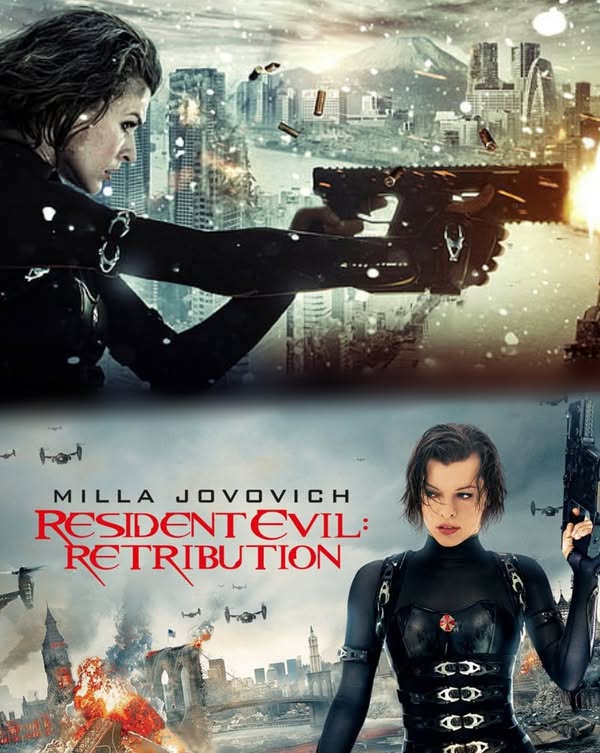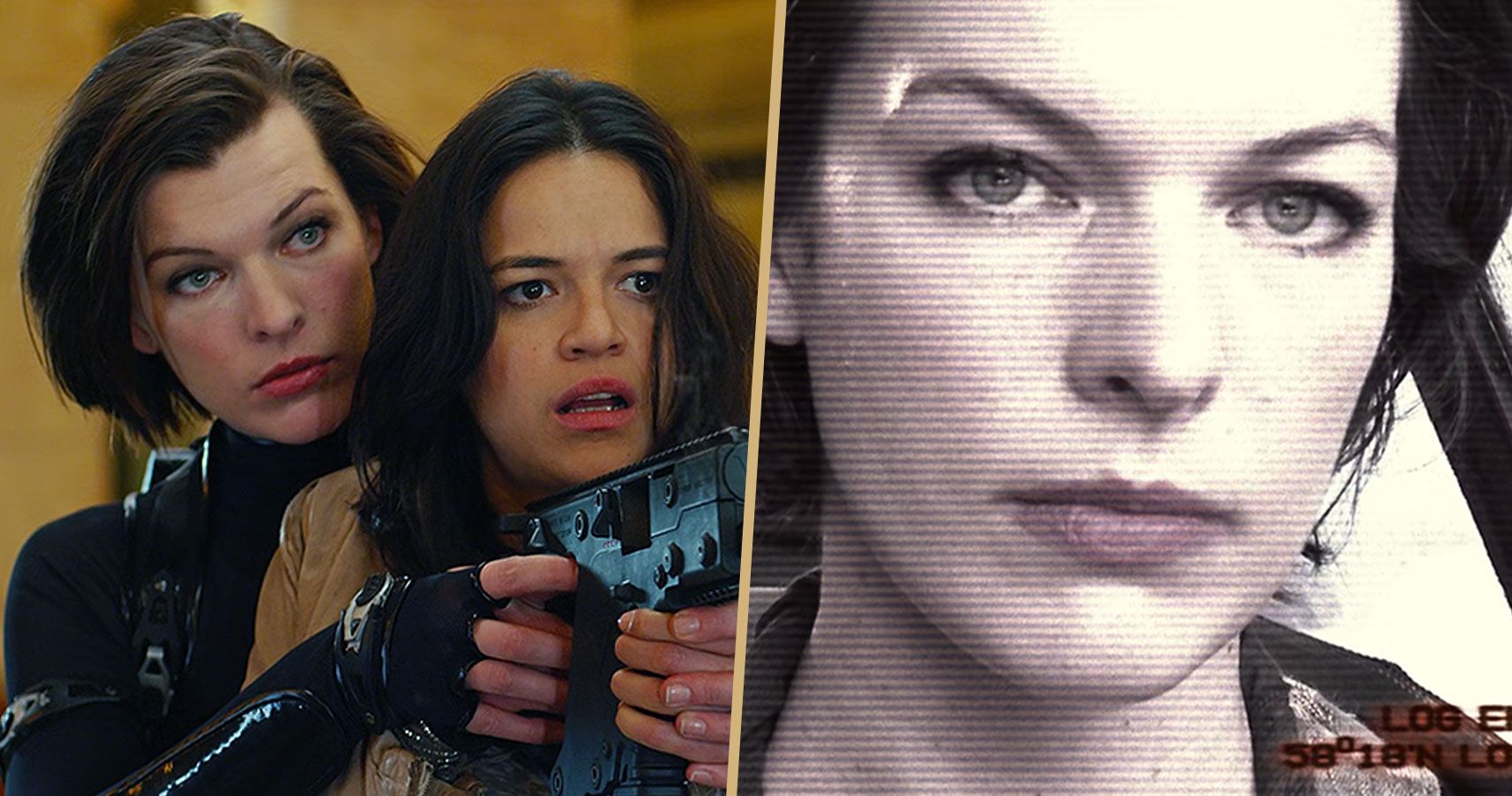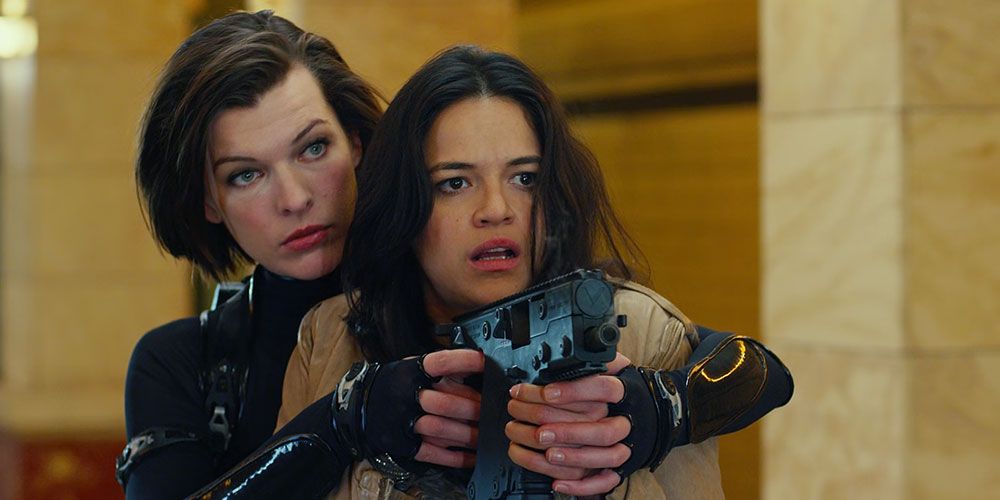Resident Evil 5: Retribution (2012) – Alice’s Deadly Quest Across the Globe

Related Movies:
Related Movies:
🧟 Resident Evil: Retribution (2012) – Alice’s Global War Against the Undead
Resident Evil: Retribution (2012), the fifth installment in the wildly popular video game-inspired film franchise, represents a turning point in the saga of Alice, the indomitable heroine played by Milla Jovovich. Directed by Paul W.S. Anderson, this chapter expands the franchise’s scope in both narrative ambition and visual spectacle. While previous films focused on localized outbreaks and clandestine labs, Retribution explodes the narrative onto a global stage, traversing simulated recreations of New York, Tokyo, Moscow, and more, reflecting the worldwide spread of the T-virus.
The film offers more than just brutal zombie carnage and dazzling action choreography. It deepens the mythology of the Resident Evil cinematic universe, reintroduces fan-favorite characters, and dares to question the very fabric of identity and loyalty in a world where cloning, manipulation, and synthetic environments blur reality. In this review-essay, we dissect Retribution across five dimensions: plot analysis, thematic depth, character evolution, action and aesthetics, and legacy within the franchise.

I. Plot Dissection: A Surreal Awakening and a Desperate Escape
The film opens in an unconventional manner: a reversed action sequence of a naval battle atop the Arctic Umbrella base. The stylized reverse-slow-motion sequence immediately signals the director’s ambition to blend art-house technique with bombastic blockbuster energy. Alice awakens in a sterile, high-tech prison cell — reminiscent of classic sci-fi dystopias — signaling a journey that is as psychological as it is physical.
Her escape is orchestrated through the intervention of Ada Wong (Li Bingbing), a covert agent working for Albert Wesker — the former Umbrella chairman who is now inexplicably aiding Alice. Together, they traverse massive simulated environments — virtual recreations of major global cities designed by Umbrella to test viral outbreaks under controlled conditions. These simulations are disturbingly accurate, complete with infected citizens, parasitic mutations, and violent enemy operatives.
As Alice fights her way through the simulations, a secondary rescue team led by Leon S. Kennedy (Johann Urb) and Barry Burton (Kevin Durand) attempts to reach her. Meanwhile, she is haunted by cloned versions of former allies and enemies, including Rain Ocampo (Michelle Rodriguez), Carlos Oliveira (Oded Fehr), and One (Colin Salmon) — a narrative choice that tests her emotional resilience.
Ultimately, the film concludes with Alice and her remaining allies escaping the underwater facility. But there is little time to celebrate, as Wesker injects her with the T-virus once more and declares war against the Red Queen — Umbrella’s AI system that has now turned against all of humanity. The final shot reveals a fortified White House under siege by a monstrous army of infected creatures, setting the stage for the apocalyptic war promised in the sequel.
![RESIDENT EVIL 5 Retribution Trailer - Alice's Story 2012 Movie - Official [HD]](https://i.ytimg.com/vi/IAFK9dp7v1o/maxresdefault.jpg)
II. Thematic Analysis: Identity, Control, and Synthetic Reality
Beneath its pulse-pounding action, Retribution is rich with themes that resonate in the digital and post-human age. The film wrestles with ideas of identity and memory, especially through the use of clones. Several characters appear in different versions — some friendly, others hostile. These copies are not mere action puppets; they challenge the concept of a stable self. If a clone retains memories, behaviors, and emotions identical to the original, is it less “real”?
Alice’s own struggle reflects this: having been experimented on, mutated, and depowered multiple times, her identity is increasingly shaped not by her past, but by her choices in the moment. Her resilience lies in refusing to be defined by those who seek to control her — Umbrella, Wesker, and even the Red Queen.
Control and surveillance are central themes, manifested through the simulated environments. Umbrella’s ability to recreate entire cities for testing evokes parallels with digital simulations and real-world military AI experiments. The Red Queen’s role echoes Orwellian control systems — omnipresent, manipulative, and opaque in motive.
Finally, the film’s global scope amplifies the theme of globalization and unchecked bio-corporate power. By taking the outbreak simulations to Tokyo, New York, Moscow, and suburban America, the film underscores that no part of the world is safe from Umbrella’s ambitions. It is not a regional crisis but a species-level threat, and the fight must be global.

III. Character Development: The Evolution of Alice and Her Allies
Alice, once a passive test subject, has become a warrior-messiah figure. Retribution adds a new layer of vulnerability to her — not by weakening her physically, but by removing her support systems and forcing her to confront illusions of the past. When she sees a domesticated clone of herself murdered in front of her, the shock is profound — not just because it’s a version of her, but because it shows the life she could never have.
Ada Wong, making her cinematic debut, adds an element of intrigue. Her motives remain ambiguous throughout, reflecting the character’s portrayal in the video games. While she aids Alice, her loyalty seems driven more by strategic calculation than emotional alignment.
The return of Rain, Carlos, and One as clones serves as a clever narrative mechanism to blur past and present. Rain in particular becomes a fascinating dual figure — a peaceful activist clone and a remorseless enforcer clone — forcing Alice to confront both hope and despair in the same face.
Meanwhile, Leon Kennedy and Barry Burton, though underdeveloped compared to the leads, anchor the narrative with their game-faithful personas, appealing directly to longtime fans.
IV. Visual Design and Action: Aesthetic Brutalism Meets Digital Dystopia
If nothing else, Resident Evil: Retribution is a visual feast. Cinematographer Glen MacPherson uses the 3D format (a point of emphasis in marketing) to enhance depth, distance, and dread. The simulated cities are realized with uncanny precision — gleaming skyscrapers of Tokyo, rain-soaked streets of Moscow, and the frozen Atlantic corridors of Umbrella’s base all evoke a strange familiarity, only to be subverted by nightmarish intrusions.
The action choreography — a highlight of the film — balances wire-fu agility with bone-crunching brutality. One standout sequence is the zero-gravity corridor fight, where Alice and Ada dispatch multiple infected soldiers in a ballet of slow motion and rotating gravity planes. Another fan-favorite is the Moscow chase, where mutated undead on motorcycles barrel through frozen streets as Leon’s team fires RPGs from an armored truck — pure chaos, expertly staged.
The use of silence is also notable. At times, music cuts out entirely, letting the audience sit with the unsettling quiet of artificial environments. This minimalism creates a psychological tension often absent in action horror.
The creature design continues to push boundaries. The Las Plagas-infected soldiers, with mandibles splitting open mid-fight, are grotesque echoes of The Thing (1982) and Silent Hill. Each monster seems designed to assault the human form with terrifying efficiency.

V. Franchise Impact and Legacy: Evolution or Excess?
Critically, Retribution received mixed reviews. Detractors argued the plot was convoluted and thin on character development, while supporters praised the action, scale, and faithfulness to the video games. What cannot be denied is that Retribution fully embraced the gaming logic of the franchise — with checkpoints, bosses, repeated characters, and geographically shifting levels — more than any previous film.
The film grossed over $240 million worldwide, proving its international appeal, especially in Asia and Latin America, where video game culture is deeply rooted. It also solidified Resident Evil as one of the most successful video game franchises in cinema history, even as critical consensus wavered.
Importantly, Retribution paved the way for Resident Evil: The Final Chapter (2016), setting up an apocalyptic war and redefining Alice’s purpose as humanity’s last hope. The film’s cliffhanger ending — with Wesker, Alice, and the remnants of humanity preparing for a last stand atop the besieged White House — remains one of the franchise’s most iconic images.
VI. Final Verdict: A Dazzling, Flawed, Yet Fiercely Ambitious Chapter
Resident Evil: Retribution may not be a perfect film — but it is an audacious one. It dares to go global. It fuses action and horror with cyberpunk dystopia. It experiments with narrative fragmentation and recursive character arcs. And above all, it cements Alice as not just a survivor, but a symbol — of resistance, of reinvention, of raw, human will in the face of scientific monstrosity.
For fans of high-octane horror-action hybrids, Retribution delivers a kinetic, stylized, and surprisingly philosophical ride. It’s a cinematic virus that mutates with every film — and this time, the results are both exhilarating and terrifying.

🔍 Highlights at a Glance
-
🎭 Director: Paul W.S. Anderson
-
🌍 Setting: Simulated environments of Tokyo, Moscow, New York, Suburbia, and the Arctic
-
🧟 Antagonists: Red Queen AI, Umbrella Corporation, Las Plagas-infected clones
-
🧬 Themes: Identity, cloning, synthetic environments, global surveillance, bioethics
-
💥 Best Scene: Zero-gravity corridor battle + Moscow armored chase
-
🎮 Video Game Tie-ins: Heavily inspired by Resident Evil 4, 5, and Code Veronica
-
📈 Box Office: $240 million+ worldwide
📣 Final Rating: ★★★★☆ (4/5)
Resident Evil: Retribution is a bold cinematic experiment that redefines action horror with thematic ambition and blockbuster energy. While not without flaws, its daring visual style and mythological depth elevate it beyond mere genre fare. For fans of the series and action lovers alike, this is required viewing.
Related Movies:











